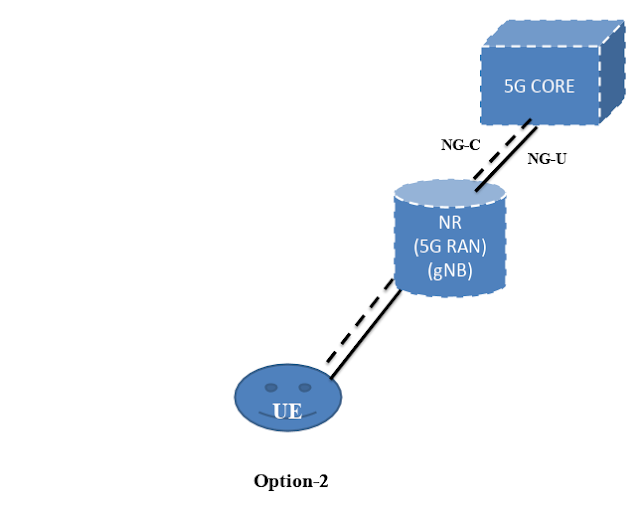5G Deployment Option-2
Home LTE NB-IoT 5G(NR-NSA)
Hi Guys today we are learning about 5G deployment options, if you want to know more about other 5G deployment option please click here
Hi Guys today we are learning about 5G deployment options, if you want to know more about other 5G deployment option please click here
Option 2: SA NR Connected
to 5G Core
This deployment scenario
will specifically be attractive in areas where there is no legacy LTE system
and the operator needs to deploy a full-fledged 5G NR access system.
This option allows the
operator to implement all types of 5G use-cases like eMBB, mMTC and URLLC.
A pre-requisite for this
option is that the operator should have multiple spectrums so that they can
provide all the above-mentioned use-cases and also provide ubiquitous 5G
coverage.
This is the most
attractive option for early deployment of full-fledged 5G networks. The
operators will have the option of introducing 5G-only service without 4G
interworking.
In SA NR, the gNB connects
to the 5G Core. The SA NR system has been defined in the full-suite of 5G
specifications, for 3GPP Rel-15.
The advantages of this
option are as follows:
▪ The operator can take
full advantage of 5G E2E capabilities
▪ All specs have been standardized in 3GPP
Rel-15 (Sep-2018)
▪ Both the Control Plane and the User Plane are
handled by 5G network
▪ Operator can deploy Inter-RAT mobility
between LTE/EPC – NR / 5GC
▪ Operator can choose between Voice fallback
to VoLTE, or IMS Voice over NR (VoNR)
The disadvantages of this
approach are:
▪ Direct deployment of 5G requires more
investment
▪ The operator cannot leverage the existing legacy
network (LTE) deployments in the short-midterm.
The new 5GC is required to
support SA 5G (option 2) as well as options 4, 5 and 7 as part of the 3GPP standard.
This phase promises the greatest potential for
future evolution and further growth, with many new capabilities introduced in
the 5GC. The devices will also be able to handle many new services.




Comments
Post a Comment